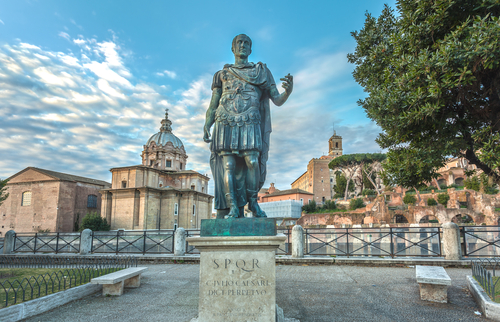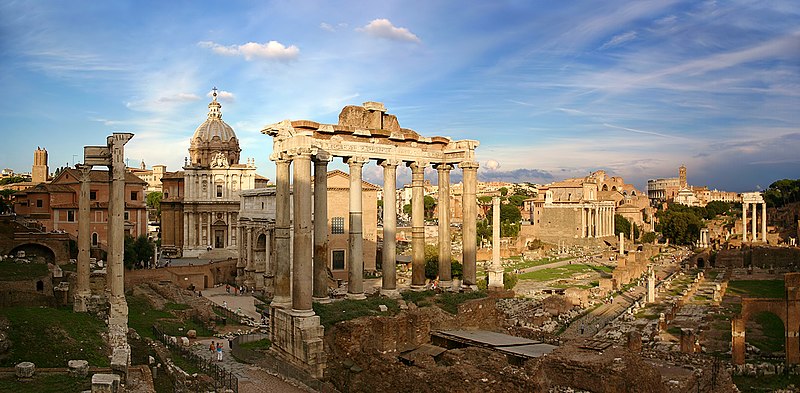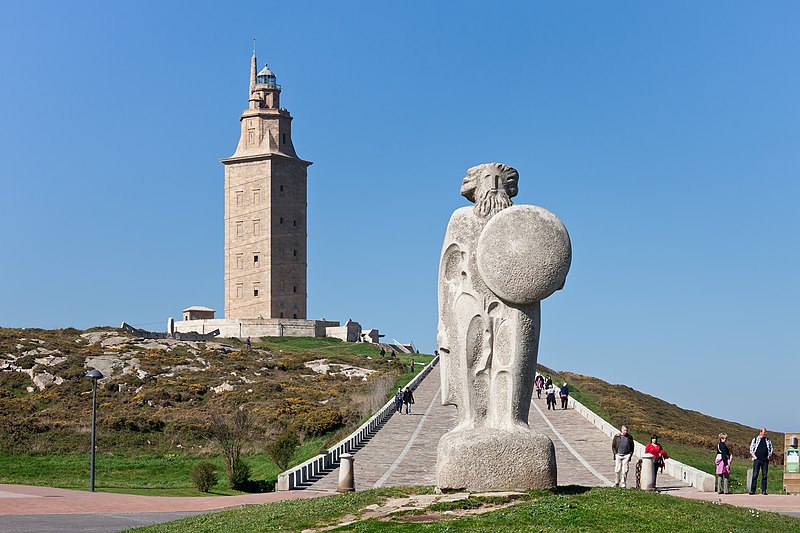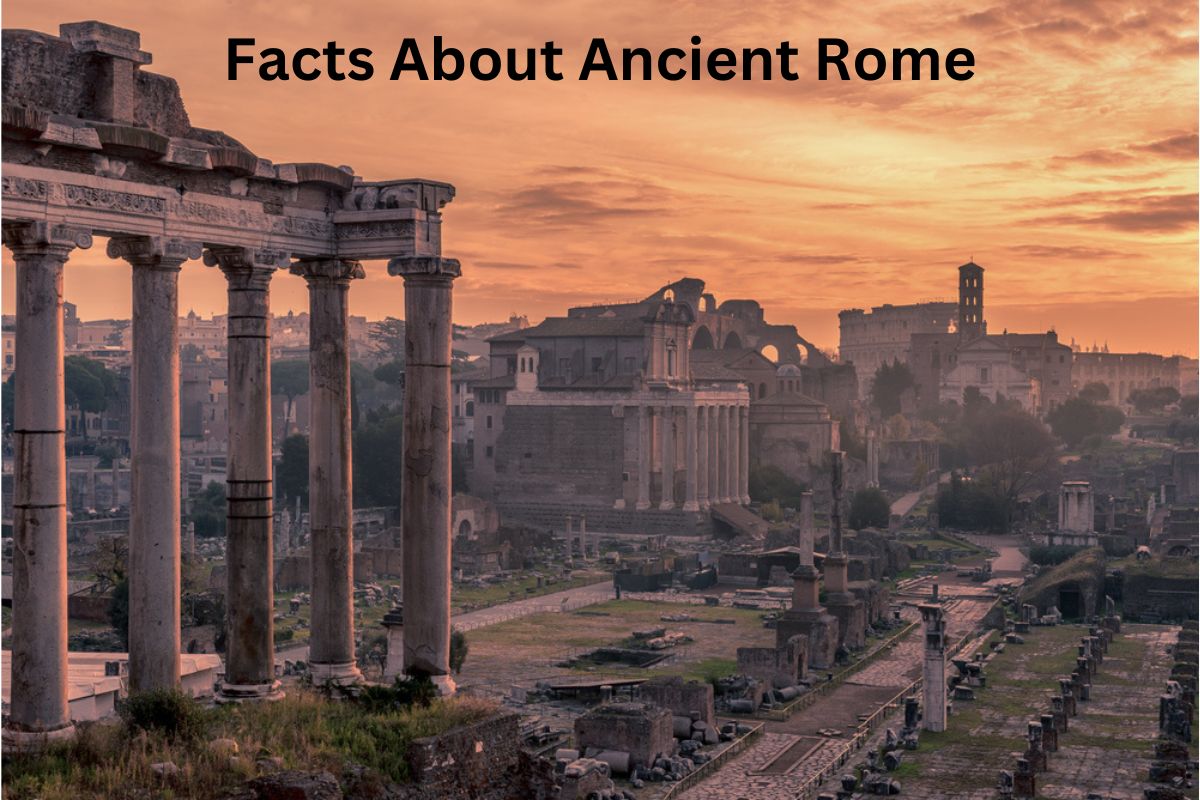Ancient Rome was a powerful civilization that thrived from 753 BCE to 476 CE. It began as a small settlement and grew into a vast empire that encompassed a significant part of Europe, North Africa, and the Middle East.
Rome went through different phases, starting as a republic and transitioning into an empire with emperors at the helm. Roman society was divided into classes, with the wealthy patricians, common plebeians, and enslaved individuals.
The Romans were known for their advanced engineering and infrastructure, including the construction of roads and aqueducts. The Roman army was highly skilled and played a crucial role in the expansion and defense of the empire. Roman law and its principles have left a lasting impact on legal systems worldwide.
The Romans worshipped a pantheon of gods and goddesses, and their cultural contributions encompassed grand architectural structures, entertainment spectacles like gladiatorial games and chariot races, as well as notable achievements in art, literature, and philosophy.
Ancient Romans Facts
1. Ancient Rome existed from 753 BCE to 476 CE
Ancient Rome was founded in 753 BCE according to Roman mythology. It began as a small settlement on the banks of the Tiber River and grew into a powerful empire.
The Roman Empire lasted until 476 CE when the Western Roman Empire fell due to various factors, including invasions, economic decline, and political instability.

2. The Roman Republic preceded the Roman Empire
The Roman Republic was established in 509 BCE following the overthrow of the Roman monarchy. It was a period characterized by a republican form of government with elected officials and a Senate.
Also Read: Roman Accomplishments
The republic expanded its territory through conquest, and its system of government allowed for checks and balances between different branches of power. However, internal conflicts and power struggles eventually led to the transformation of the republic into an empire.
3. Roman society had three classes: patricians, plebeians, and slaves
Roman society had three classes: patricians, plebeians, and slaves
The patricians were the wealthy elite, consisting of aristocratic families who held political power and controlled most of the land.
The plebeians were the commoners, including farmers, artisans, and merchants. They had fewer privileges and rights compared to the patricians.
Slaves made up a significant portion of the population and were considered property rather than citizens. They performed various tasks, ranging from manual labor to household duties, and had limited legal rights.
4. Romans were known for their advanced engineering and infrastructure
The Romans were skilled engineers and constructed an impressive infrastructure throughout their empire.
They built an extensive network of well-paved roads, including the famous Appian Way, which facilitated trade, communication, and the movement of troops.
The Romans also constructed aqueducts, which were impressive feats of engineering that transported water to cities and allowed for the development of public baths, fountains, and irrigation systems.
Additionally, Roman architecture displayed grandeur and innovation, with iconic structures like the Colosseum, the Pantheon, and the Forum showcasing their architectural prowess.

5. The Roman army was highly skilled and organized
The Roman army was one of the most formidable military forces of its time. It was organized into legions, each consisting of thousands of well-trained and disciplined soldiers. The soldiers, known as legionaries, underwent rigorous training and were equipped with standardized weapons and armor.
Also Read: Facts About the Roman Army
The Roman army’s success can be attributed to its military tactics, such as the “testudo” formation, where soldiers interlocked their shields to form a protective shell.
The army played a crucial role in expanding and defending the Roman Empire, and its disciplined structure contributed to its effectiveness.
6. Roman law has influenced legal systems worldwide
Roman law was a significant achievement of ancient Rome and has had a profound and enduring impact on legal systems around the world. The Romans developed a comprehensive legal framework that encompassed civil law, criminal law, and property law.
They believed in the principle of “innocent until proven guilty” and established legal procedures that emphasized due process and the rights of individuals. Concepts such as contracts, property rights, and legal personhood find their roots in ancient Roman law.
Many modern legal systems, including civil law systems, have been influenced by Roman legal principles, and the study of Roman law remains relevant today.
7. Romans worshipped a pantheon of gods and goddesses
Roman religion was polytheistic, meaning they believed in and worshipped multiple gods and goddesses. The Romans adopted many gods and religious practices from the Greeks but gave them Roman names.
Some of the prominent gods in the Roman pantheon included Jupiter (Zeus in Greek mythology), the king of gods and the god of the sky and thunder, Juno (Hera), the goddess of marriage and childbirth, Minerva (Athena), the goddess of wisdom and strategic warfare, and Mars (Ares), the god of war.
The Romans built temples dedicated to these deities and conducted religious ceremonies and rituals to honor and appease them.
8. Romans were skilled builders and constructed grand structures
The Romans were renowned for their architectural achievements. They constructed grand public buildings, temples, amphitheaters, and bathhouses throughout their empire.
The Colosseum, built in the first century CE, was an impressive amphitheater used for gladiatorial contests, animal hunts, and other spectacles. The Pantheon, a well-preserved Roman temple, showcased remarkable architectural design and engineering.
Roman bathhouses, such as the Baths of Caracalla, were elaborate complexes that served as social gathering places for bathing, exercise, and relaxation.

9. Entertainment in ancient Rome included gladiatorial games and chariot races
The Romans had a diverse range of entertainment options. Gladiatorial games were highly popular and took place in grand arenas like the Colosseum. Gladiators, trained fighters, would battle each other or wild animals to entertain the crowds.
Also Read: Facts About Gladiators
Chariot races were another favored form of entertainment held at the Circus Maximus. These races involved charioteers competing in fast-paced and dangerous races around a track. The Romans also enjoyed theater performances, which included comedies, tragedies, and other forms of dramatic presentations.
10. Ancient Rome made significant contributions to art, literature, and philosophy
Roman culture thrived in the fields of art, literature, and philosophy. Roman art drew inspiration from Greek art but developed its own distinctive style. Roman sculpture portrayed a sense of realism and often depicted emperors, gods, and mythological figures.
Roman literature produced renowned authors, such as Virgil, who wrote the epic poem “The Aeneid,” Ovid, known for his works like “Metamorphoses,” and Cicero, a prominent philosopher and statesman known for his speeches and philosophical treatises.
Roman philosophy was influenced by schools of thought like Stoicism and Epicureanism, exploring concepts of ethics, morality, and the nature of existence.
